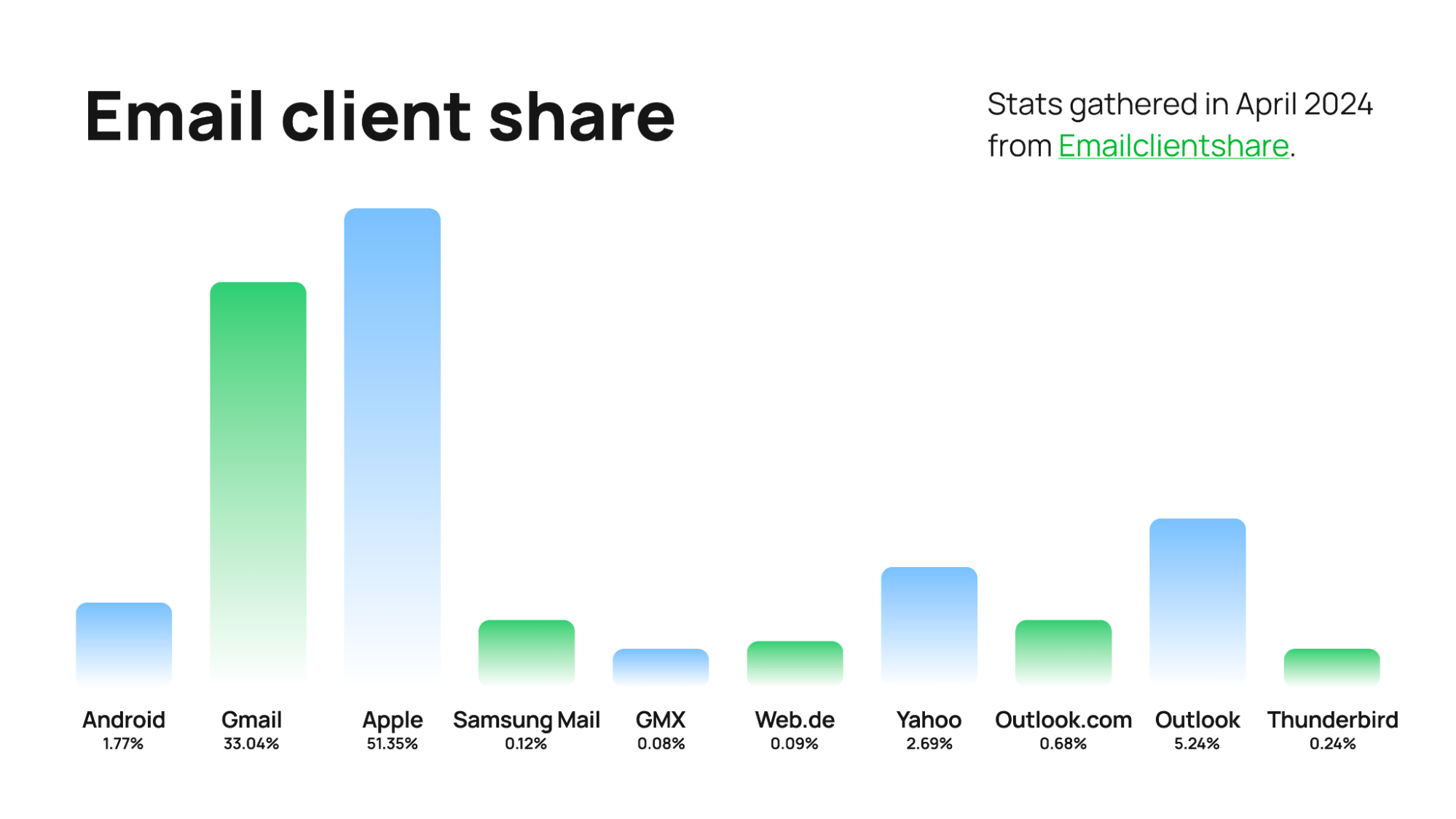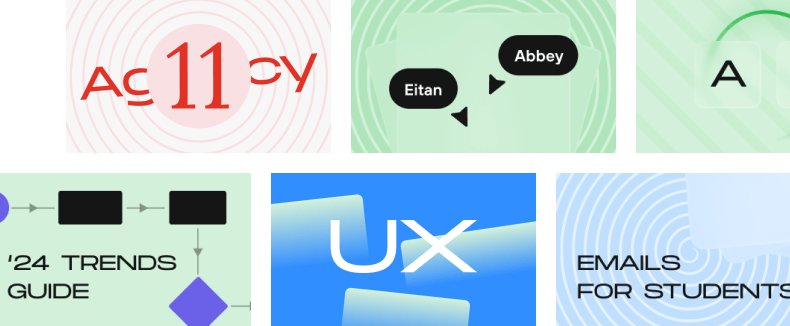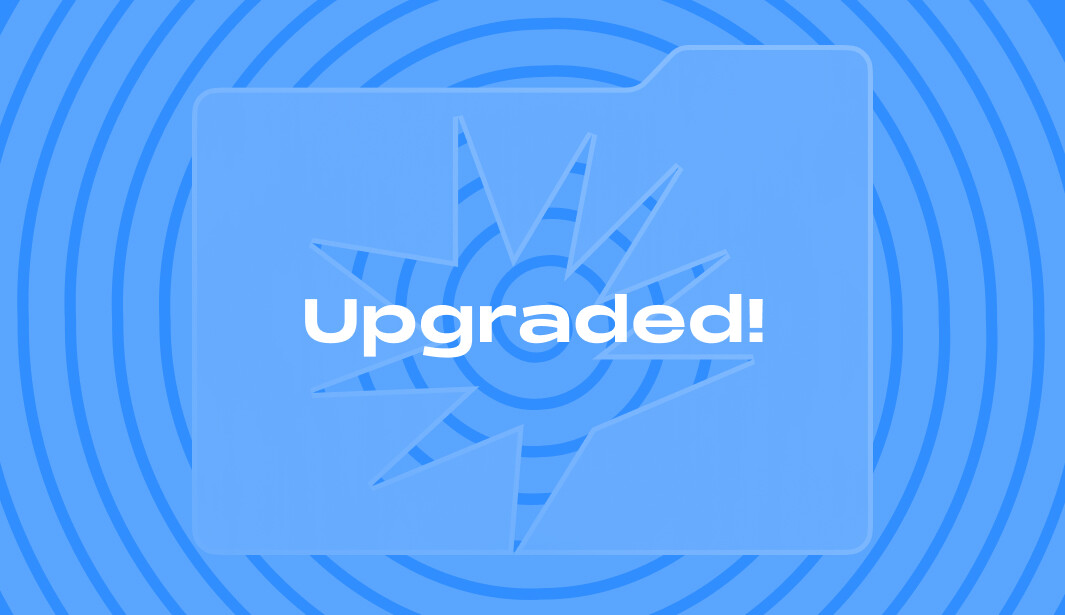Gamification and interactive content in emails can be a goldmine!
By utilizing any in your email marketing campaigns, you get:
- ROI increased by 300%: This substantial increase stems from heightened user engagement and improved conversion rates, making gamification an effective tool to elevate your marketing success;
- CTOR increased by 225%: Interactive emails lead to higher user engagement by integrating elements like games, directly enhancing conversion rates;
- better brand differentiation and retention: Gamified content helps brands stand out and be memorable, reinforcing brand identity and increasing customer retention through engaging elements;
- user response rate increased by 520%: Interactive surveys in emails show a 520% higher response rate compared to external website forms. This includes surveys, feedback, ratings, open forms, and NPS scores.
The good news is, that creating such engaging games doesn't require you to be a coding expert.
Now, email coders, including us, have learned to design games that feature AMP-powered content for Gmail and Yahoo users, and advanced HTML & CSS-powered content for Apple and Samsung Mail users, covering approximately 90% of all recipients. Interactive content allows recipients to play directly in the email. There’s also a text fallback version for those 10% using email clients that do not support interactivity.
But here's the catch: Different email service providers (ESPs) offer varying levels of support for interactive elements. Some do not support AMP but do support advanced HTML & CSS, while others support exactly the opposite. And some have no support for interactivity at all. If your ESP doesn't support the code behind your game, recipients will see the fallback version. Of course, you could add a web version of the email as an additional fallback. This is where things get tricky: How do you track user engagement and, most importantly, monitor sales and conversions? This was a significant obstacle for many marketers.
Here is why we upgraded our game generator: It now allows you to track customers’ activity both inside the email and across the web version.
We will unveil the secrets to flawless fallback implementation, ensuring your gamified emails are not only fun and interactive but also deliver measurable results. But first, let's take a brief detour into the coding of gamified emails.
The challenge of diverse email technologies, or why there is a problem here
Two coding approaches for gamified emails are widely supported among email clients. Gmail (33.04%) and Yahoo (2.69%) together hold about 35.73% of the market share and support Google's AMP technology, which allows for rich, interactive emails directly within the inbox. Meanwhile, Apple (51.35%), Samsung Mail (0.12%), and Thunderbird (0.24%), which collectively have a 51.71% share, use HTML and advanced CSS. This situation requires email marketers to maintain a strategic balance by including both code versions in the email.
To navigate the complexities of email client support, understanding the fallback hierarchy is key. Here's how it works:
The ideal way:
- interactive AMP experience: For recipients using email clients like Gmail that support AMP, your email will ideally display the full interactive version you designed.
The built-in backup:
- interactive HTML & advanced CSS Fallback: Many email clients, even those not supporting AMP, can still render interactive elements built with HTML & advanced CSS. This acts as a natural fallback, ensuring a good portion of your audience can still engage with your gamified content.
The static fallback:
- a last resort: For a small segment of recipients with email clients like Outlook that lack interactivity support altogether, a basic textual fallback version will be displayed. This ensures everyone receives your message, but unfortunately, it lacks the engagement potential of the interactive versions.

While some technical hurdles exist, the good news is the vast majority of email users (around 90%) can now experience engaging games within their emails. That means only a small percentage (roughly 10%) see a static fallback version.
The real challenge lies with ESP compatibility
For recipients to see your gamified elements, your chosen ESP needs to support both AMP and advanced HTML & advanced CSS. Unfortunately, some ESPs lack support for one or the other. This means even if your target audience primarily uses Gmail (which conditionally supports AMP), they might not see the beauty of your gamified email if your ESP doesn't play ball. The result? A simple static fallback instead of the intended interactive experience.
Here, the solution could be simply offering a link to a web version of the game. While players are often willing to click through, a major issue arises: Tracking user behavior. How do you track who clicked the link, who played the game, who made a purchase, and who left feedback? Without proper tracking, measuring the true effectiveness of your gamified campaign becomes impossible.
This is where our solution comes in…
The power of an upgraded web version
The challenge of tracking user behavior across email and web versions is elegantly addressed through our upgraded email game generator. Here's how it works:
- seamless transition with dedicated landing pages: Instead of a generic link, recipients clicking on a gamified element are directed to a custom landing page (automatically built as a fallback). This ensures a smooth, familiar experience that minimizes disruption and keeps users engaged. For example, recipients can fill out a form or select an answer directly within the email if they're using AMP-capable clients like Gmail or viewing it in Apple Mail/Samsung Mail. Otherwise, we ensure seamless redirection to a web version where their responses can be submitted effortlessly (some of their answers to a questionnaire will already be highlighted as chosen);
- centralized data hub: This landing page acts as a central hub, meticulously collecting comprehensive user interaction data. Regardless of whether the recipient viewed the gamified element through AMP, advanced HTML & CSS, or the fallback version, all interaction data is captured seamlessly;
- ability to use personalization/merge tags: To unlock deeper insights, we've enabled the addition of personalization tags to the landing page in the game's hidden fields. These invisible markers allow you to track customer data (such as name, email, and other identifiers). When the form (game) is submitted, this data, along with the responses, is sent to the service. This way, you can see not only the responses on the server but also who exactly submitted them.
This gives you a comprehensive picture of user behavior within your gamified email campaign. You can see which recipients clicked on the gamified element, participated in the game, filled out forms, and ultimately converted into paying customers. This invaluable data empowers you to refine your gamification strategies for future campaigns, maximizing engagement and driving measurable results.
Data collection and analysis: Unveiling the power of user behavior
The true magic of gamified emails lies in the data they generate. All user interactions, from clicks within the email to activities on the dedicated landing page, are meticulously collected and stored in our Data Service. This service goes beyond simple storage; it acts as a powerful analytics engine, providing valuable insights into user engagement and campaign effectiveness.
The Data Service provides a wealth of information, including:
- game participation levels: See exactly how many recipients played your game and how many times they interacted with it;
- detailed user responses: Analyze the specific answers and choices recipients made within the game, along with the email address and name associated with each interaction;
- form completion rates: Track how many recipients completed any forms included within your gamified email;
- conversion tracking across platforms: Gain insights into purchases made directly through the landing page, regardless of whether recipients access the game from the email or web version.
The revision emphasizes the following:
- detailed data in the editor: You can see all this information directly within our editor, eliminating the need for external data analysis tools;
- cross-platform tracking: Data collection seamlessly tracks user behavior across both the email and web versions.
Access to the stored data:
- data service: The data is stored in the data service that you create within the editor. You can download the campaign’s results as CSV files;
- Google Spreadsheet: You can easily transmit data to a Google Spreadsheet using webhooks without storing data on Stripo’s end;
- external data storage through webhooks: Transmit data to external data storage through webhooks, also without storing data on Stripo’s end;
- combined use: You can also use data service and external data storage simultaneously.
Wrapping up
Gamified emails hold immense potential, but ensuring a seamless experience across diverse email clients can be a challenge. This is where flawless fallback implementation comes in.
The problem: Different ESP support and email client capabilities create inconsistencies. Even though advancements allowed coding emails that supported both AMP and advanced HTML & CSS, reaching a staggering 90% of your subscribers, there's a crucial catch. Email Service Providers (ESPs) themselves may not support delivering these types of content. This means that even if your recipient's email client can handle the code, it might not render correctly if their ESP doesn't allow it. Without a fallback option, recipients might see non-interactive versions of your gamified email. Additionally, traditional web version links make data collection difficult.
The solution: Our solution implements a multi-layered fallback approach, ensuring everyone receives a functional version. For those who can't experience the full gamification inside the email, a seamlessly designed landing page, aka web version, automatically bridges the gap between email and the web, capturing user interaction data regardless of the initial email format (AMP, HTML & advanced CSS, or fallback). UTM tags provide granular insights, and pre-populated forms enhance user convenience.
The outcome: By leveraging flawless fallback and data-rich landing pages, you gain a comprehensive picture of user behavior within your gamified email campaigns. This empowers you to refine your gamification strategies, maximize engagement, and achieve measurable results.







0 comments